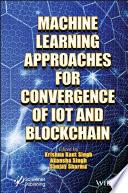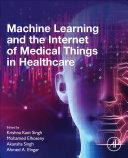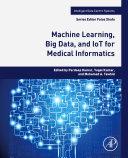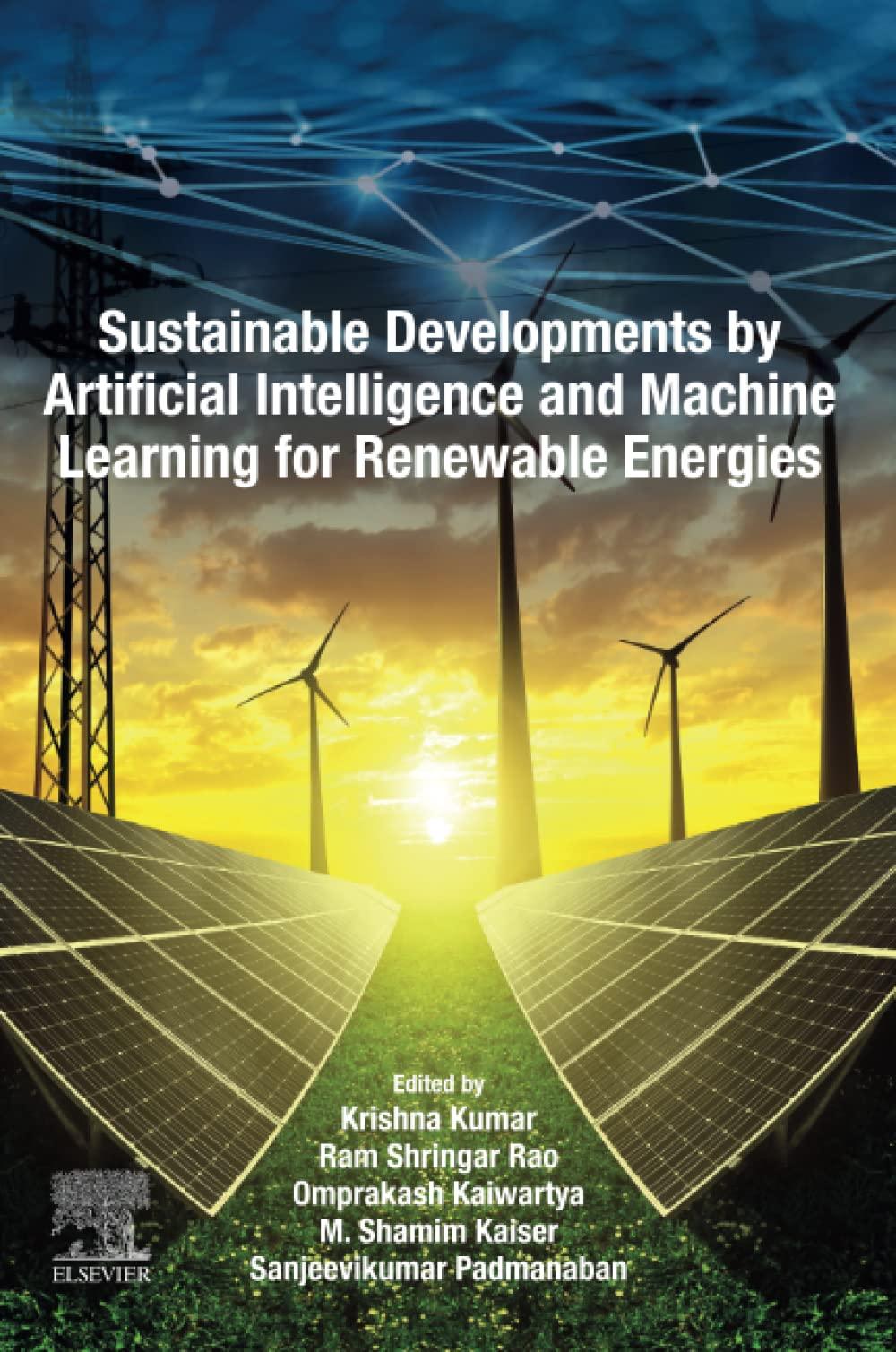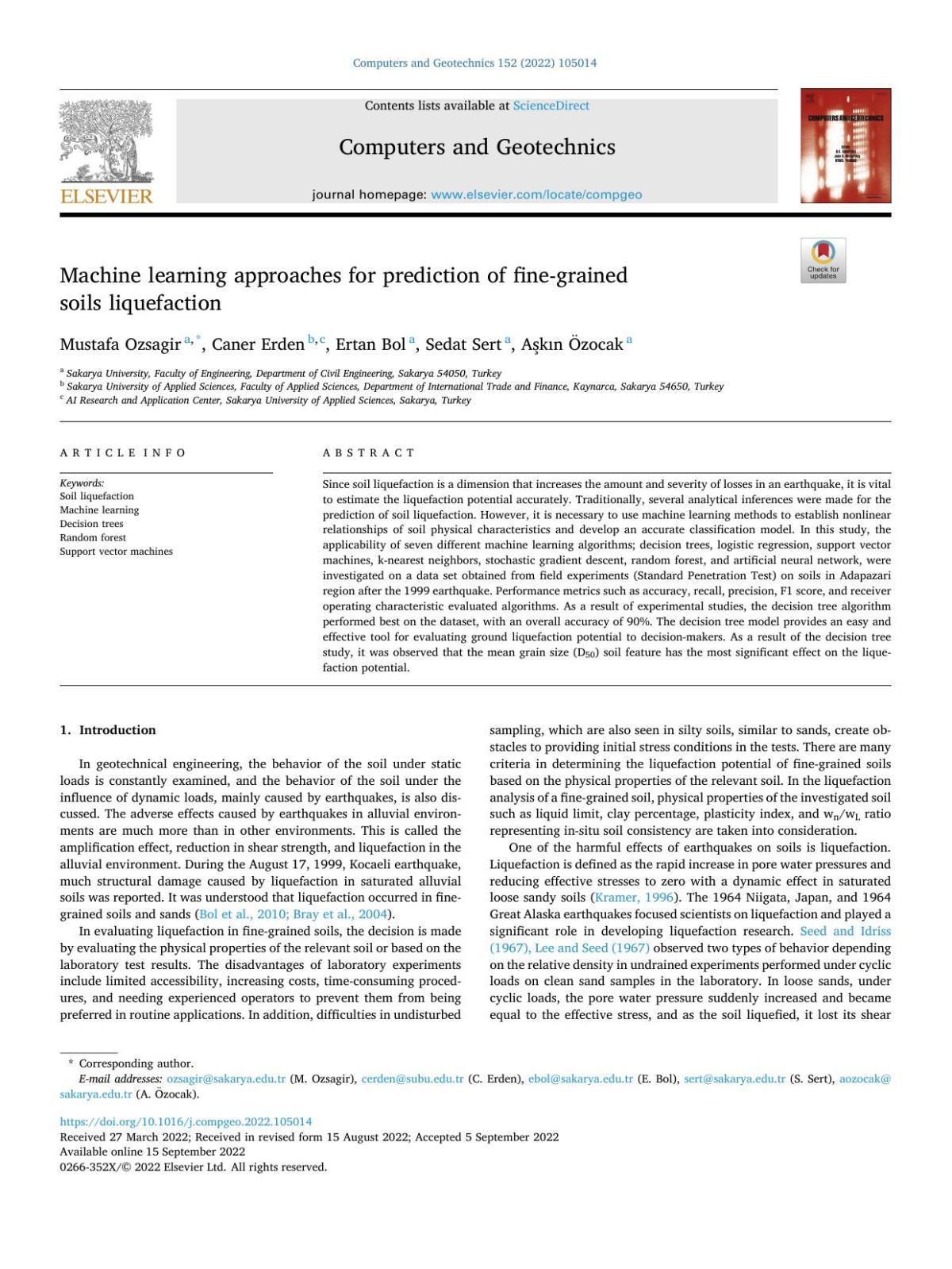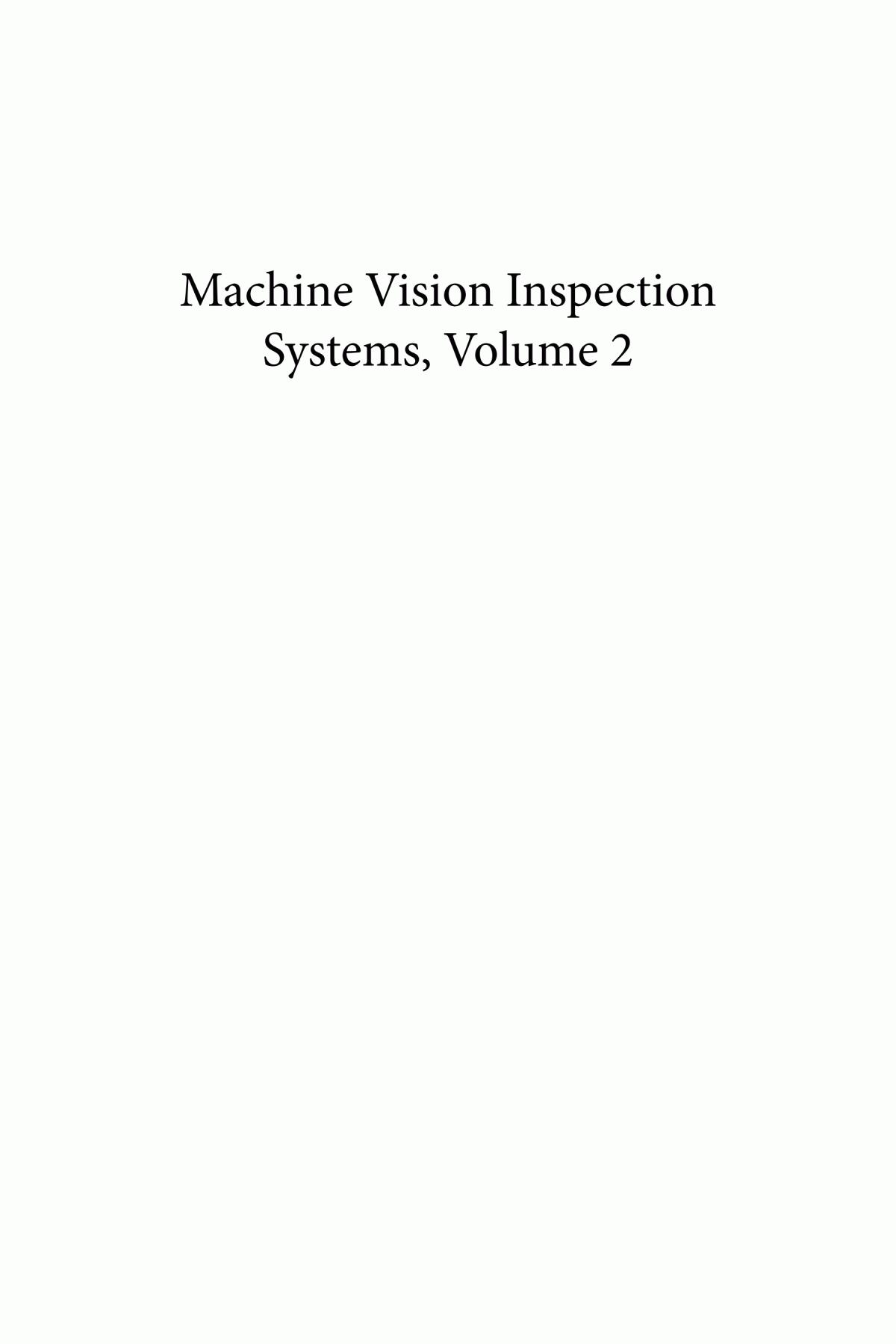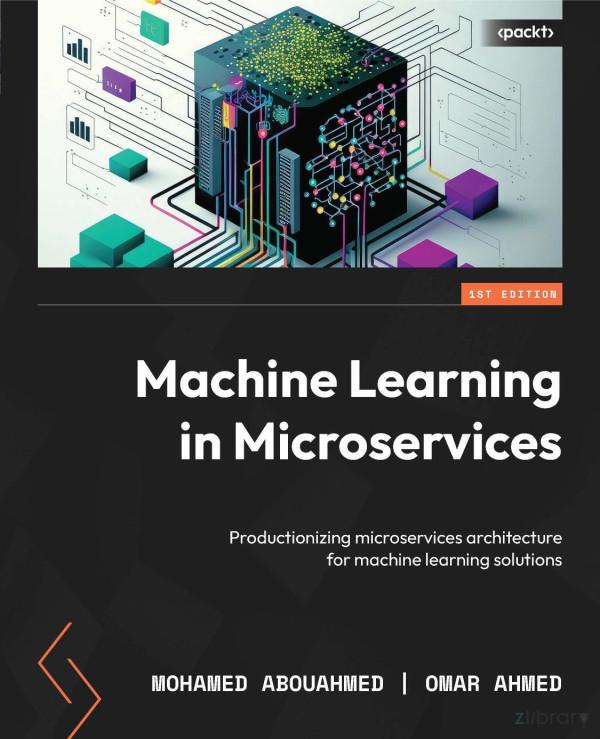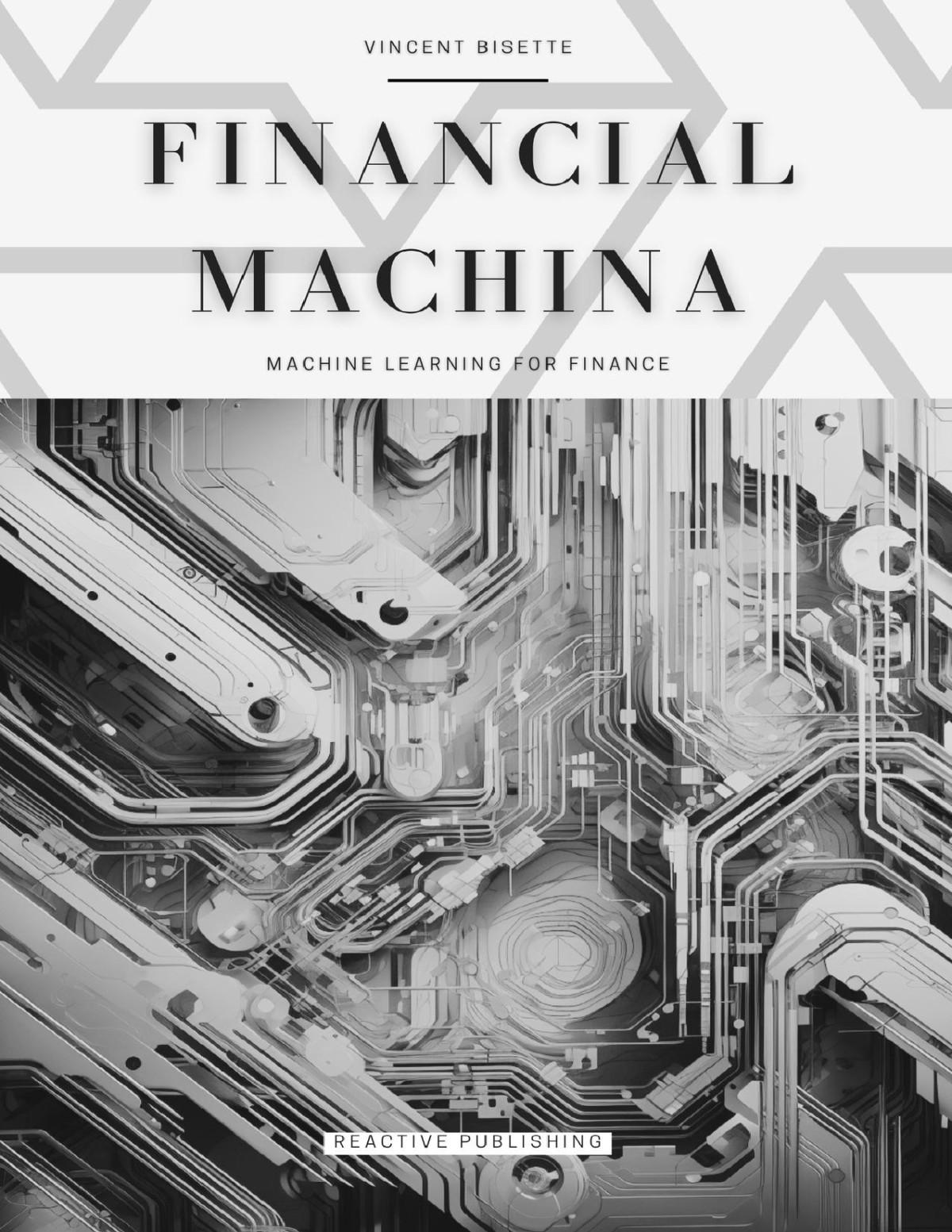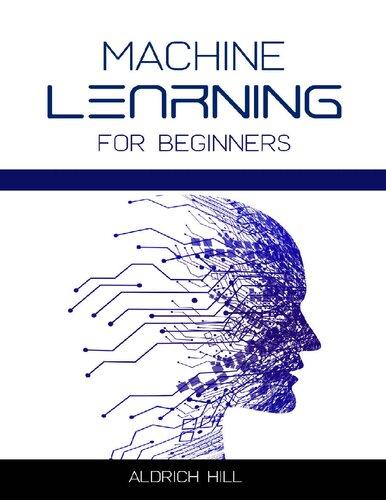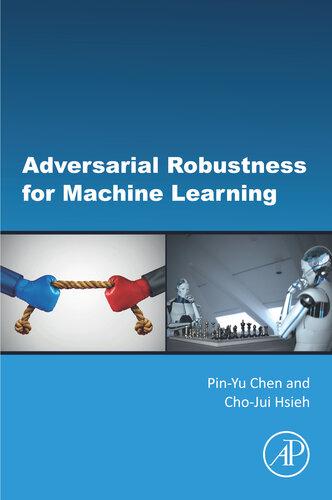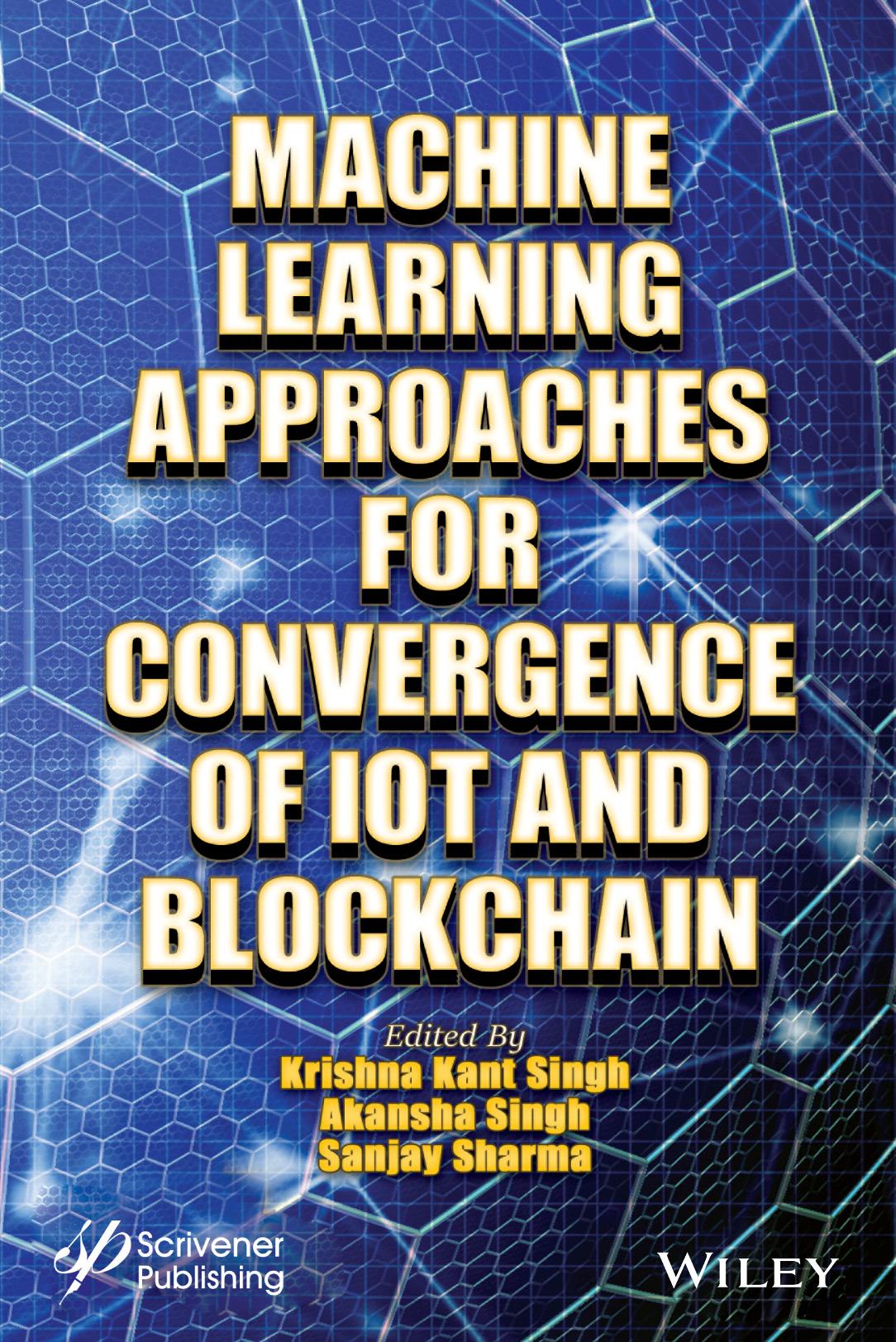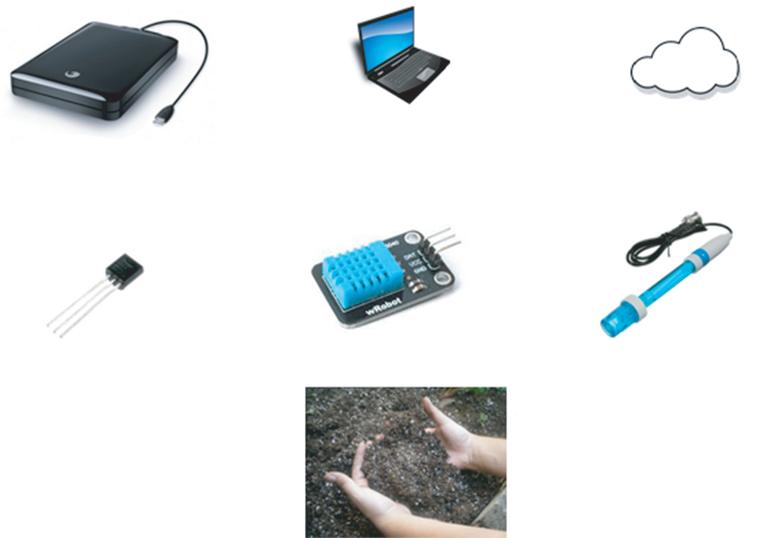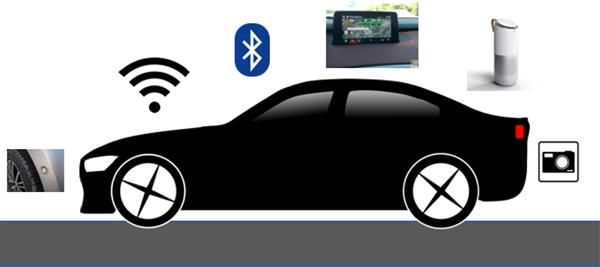Machine Learning Approaches for Convergence of IoT and Blockchain
Edited by Krishna Kant Singh
Faculty of Engineering & Technology, Jain (Deemed-to-be University), Bengaluru, India
Akansha Singh
Amity University Uttar Pradesh, Noida, India and
Sanjay Sharma
KIET Group of Institutions, Delhi-NCR, Ghaziabad, India
This edition first published 2021 by John Wiley & Sons, Inc., 111 River Street, Hoboken, NJ 07030, USA and Scrivener Publishing LLC, 100 Cummings Center, Suite 541J, Beverly, MA 01915, USA © 2021 Scrivener Publishing LLC
For more information about Scrivener publications please visit www.scrivenerpublishing.com.
All rights reserved. No part of this publication may be reproduced, stored in a retrieval system, or transmitted, in any form or by any means, electronic, mechanical, photocopying, recording, or otherwise, except as permitted by law. Advice on how to obtain permission to reuse material from this title is available at http://www.wiley.com/go/permissions.
Wiley Global Headquarters
111 River Street, Hoboken, NJ 07030, USA
For details of our global editorial offices, customer services, and more information about Wiley products visit us at www.wiley.com.
Limit of Liability/Disclaimer of Warranty
While the publisher and authors have used their best efforts in preparing this work, they make no representations or warranties with respect to the accuracy or completeness of the contents of this work and specifically disclaim all warranties, including without limitation any implied warranties of merchantability or fitness for a particular purpose. No warranty may be created or extended by sales representatives, written sales materials, or promotional statements for this work. The fact that an organization, website, or product is referred to in this work as a citation and/or potential source of further information does not mean that the publisher and authors endorse the information or services the organization, website, or product may provide or recommendations it may make. This work is sold with the understanding that the publisher is not engaged in rendering professional services. The advice and strategies contained herein may not be suitable for your situation. You should consult with a specialist where appropriate. Neither the publisher nor authors shall be liable for any loss of profit or any other commercial damages, including but not limited to special, incidental, consequential, or other damages. Further, readers should be aware that websites listed in this work may have changed or disappeared between when this work was written and when it is read.
Library of Congress Cataloging-in-Publication Data
ISBN 978-1-119-76174-7
Cover image: Pixabay.Com
Cover design Russell Richardson
Set in size of 11pt and Minion Pro by Manila Typesetting Company, Makati, Philippines
4
Pratik Kumar, Piyush Yadav, Rajeev Agrawal and Krishna Kant Singh 4.1
4.3
5
4.4
4.2.3
4.3.1
Nilanjana Pradhan, Ajay Shankar Singh, Shrddha Sagar, Akansha Singh and Ahmed A. Elngar
5.1
5.3.4
5.3.5
5.4
5.5
5.6
6
Neha Agarwal, Pushpa Singh, Narendra Singh, Krishna Kant Singh and Rohit Jain 6.1
6.2.1
6.2.1.3
6.2.1.4
6.2.2
7
6.4
6.4.1
6.4.1.1
Raghav Sharma, Anirudhi Thanvi, Shatakshi Singh, Manish Kumar and Sunil Kumar Jangir
7.1
7.2
7.3
7.3.1
7.3.2
7.4
7.5
8
S. N. Kumar, A. Lenin Fred, L. R. Jonisha Miriam, Parasuraman Padmanabhan, Balázs Gulyás and Ajay Kumar H.
ShylajaVinaykumar Karatangi, Reshu Agarwal, Krishna Kant Singh and Ivan Izonin 9.1
Preface
Blockchain technology and the Internet of Things (IoT) are two of the most impactful trends to have emerged in the field of machine learning. And although there are a number of books available solely on the subjects of machine learning, IoT and blockchain technology, no such book has been available which focuses on machine learning techniques for IoT and blockchain convergence until now. Thus, this book is unique in terms of the topics it covers. Designed as an essential guide for all academicians, researchers and those in industry who are working in related fields, this book will provide insights into the convergence of blockchain technology and the IoT with machine learning.
A rapidly advancing fourth industrial revolution, brought about by a digital revolution characterized by the convergence of technologies, is blurring the lines between physical, digital and biological objects. The speed of the fourth revolution, which is evolving at an exponential rate, certainly cannot be compared with that of any previous technologies. Some of these technologies include the artificial intelligence (AI) and IoT currently being used in interactions and operations in various fields such as home appliances, autonomous vehicles, nanotechnology, robotics, cognitive systems and wearable devices; and nowadays the potential of blockchain technology is also being realized in many sectors as well, since security is a crucial factor everywhere.
Readers in many domains will be interested in this book as it covers two major areas of the field of machine learning—blockchain technology and the IoT. Also, it will be appealing for those who want to further their research in this area, as the latest topics are covered. Therefore, the target audience of this book is composed of professionals and researchers working in the field of machine learning with IoT and blockchain technology. Moreover, the book will provide insights and support from practitioners and academia in order to highlight the most debated aspects in the field. A detailed description of each topic relevant to machine learning technologies is presented along with the concepts involved in their convergence.
In addition, research problems are included to facilitate further research based on the concepts described in the book.
First and foremost, we express heartfelt appreciation to all contributing authors for their hard work and patience. I would like to thank them for contributing chapters in this book. Thanks to the Scrivener Publishing team who helped us so much. Special thanks to Martin Scrivener for all his support, suggestions, and patience.
The Editors June 2021
Blockchain and Internet of Things Across Industries
Ananya Rakhra*, Raghav Gupta and Akansha Singh
Department of CSE, ASET, Amity University, Noida, Uttar Pradesh, India
Abstract
In this chapter, we will come across different kinds of industries and how Internet of Things and blockchain technologies are applied to them. We commence with an overview about what an industry is and the nature of various industries, followed by knowledge about the technologies of IoT and blockchain. These technologies have facilitated advancement and ease in one’s day-to-day life, the industrial sector being one among many where its impact is prevalent notably. Further, incorporation of these technologies across various sectors of industry and their scope has been focused upon. The advancements brought about, especially in fields such as that of healthcare sector, have revolutionized the previously existing methods, helping us attain better care and improved life expectancy. Also, the scope of these technologies beyond the industrial sector has been discussed. These technologies have facilitated specialization, so much so that its positive imprint can clearly be seen onto the nation’s economy. This text on the whole allows the readers to attain a clear understanding and also unveils the great scope for further research and development offered by this sphere.
Keywords: IoT, Internet of Things, blockchain, technology, industry, smart devices
1.1 Introduction
Through the course of this chapter, we will come across various types of industries and how implementing IoT and blockchain through these industries
*Corresponding author: ananyarakhra@gmail.com
Krishna Kant Singh, Akansha Singh and Sanjay Sharma (eds.) Machine Learning Approaches for Convergence of IoT and Blockchain, (1–34) © 2021 Scrivener Publishing LLC
will help facilitate the achievement of enormous endeavors beyond the scope one could think of a few years ago. These technologies have widened prospective and enhanced scope across varied fields; we will attempt to obtain an in-depth understanding of the same. Industries form the backbone of a country’s economy. Any organization that is involved in large-scale production or providing services to a lot of customers is categorized as an industry. According to the purpose of the industry, they are classified as the primary, secondary, and tertiary sectors. Classification based on the organisational framework of an industry is done as organized and unorganized sectors of industry. Categorization may also be done according to the ownership of the firm as either public or private sector industry. Each industry has varying demands and requirements based on the nature of production or service that they intend to provide. We will explore this phenomenon through the domains of various industries, for example, the agriculture industry, manufacturing industry, food production units, healthcare, military, it sector, and banking. We will see what the goals and functions of these industries are and how the efficiency and output can be highly improved, along with reducing human effort and also increasing accuracy. Then, we will move on to learn about the blockchain technology, its mechanism, requirements, advantages, and disadvantages. Blockchain technology is basically the practice of storing data into blocks that are connected to each other in the form of a chain. The distinctive feature of this technology is that once the data is entered into this chain it is immutable, which provides a very strong system to prevent any sort of tampering with the stored data, hence ensuring high level security. The chains are also encrypted and decentralized which further enhance its security. Next, we will look into what IoT is, how it works, and how it is beneficial to us. IoT is the acronym for Internet of Things, wherein we basically connect the physical devices to each other over a network enabling them to communicate and share information among each other. Here, devices are able to gain knowledge about their surroundings with the help of sensors. Common examples of IoT that have been incorporated in daily life are smart watches, smart lighting for households, surveillance cameras, etc. After understanding the functioning and applications of these, we will further see their combined applications of these two technologies in the industry. Incorporating these technologies in the industry opens up a very broad perspective to achieve new levels of specialization. Human tasks have been eased and accuracy and precision has spiked because of these. Profits made by companies have also seen increment; hence, it has proved beneficial to industries in a lot many ways. Further through the course of this chapter, after looking into the non-industrial applications of these technologies in depth, exploring various domains of implementation we will next see the applications and
scope of these technologies beyond industries as well. In particular, we will be looking into how they have helped enhance life in different possible ways. First, we will get to know what smart homes are and study the involvement of these technologies in its creation and implementation. This advancement has brought about a lot of ease and pace into one’s day-to-day household tasks and also evolved one’s lifestyle. Then, we will read about how security via surveillance has been technologically boosted with the coming of IoT and blockchain into this sphere. The ways of monitoring have been specialized and the security of the data thus obtained is also highly increased due the usage of blockchain. Life and property are now being better guarded with the help of these. Smart solutions such as automated street lighting have also come up which contribute toward saving energy and resources, and incorporation of security mechanisms such as surveillance along with the street lights making the equipment multi-purpose and more useful. Let us begin with introducing what an industry is and how it functions.
1.2 Insight About Industry
In today’s time, the types and scope of industries are massive. Industries have met with a lot of varied applications and requirements and are serving to facilitate the same. These industries provide to serve needs of mankind, ranging from the most basic necessities to comfort and exotic offerings. Industry can be referred to as any large-scale productive activity. It is these industries that strengthen a nation’s economy, fulfils its needs, and provide safety, security, etc. Most spheres around us are industries in themselves. Some sectors of industry are depicted in Figure 1.1. The main features of any industry are large-scale production, specialization, research and development, mechanization, standardization, and management. We will now look into types or classification of industries and get to know about each one of them individually [1]. Industries can broadly be classified into the sectors: primary, secondary, and tertiary. The primary sector comprises of industries that are mainly involved in the extraction of raw materials, for examples, industries extracting metals from their ore, mining, and farming. The secondary sector is where industries perform manufacturing and packaging of goods and commodities, examples of this sector of industries include food processing industries, car part manufacturing, and other such industries. The tertiary sector is also known as the service sector; industries such as IT, defence services, judicial workforce, banking, and teaching come under this category. Other bases of classification are either as organized and unorganized sector industry or as public sector or private sector industry.








Organized industry sector is such that all its employees are assured work throughout their employment and there terms for the same are fixed and regular. In contrast, the unorganized sector provides flexible employment at the discretion of the employer and there exist no regularity or guarantee of the employment term, also such institutions may not necessarily be registered with the government. Public sector industries are those which are owned, funded, and managed by the government and like most other government jobs provide benefits to its workers such as pension. Private sector industries are owned by individual or partnerships between individuals.
The main motive of the individual running the company is to earn profit and these are not state controlled. The terms of employment may vary from company to company based on the interests of the owner. In India, most of the private sector industries are known to be paying higher salaries to its employees as compared to government industries but government jobs are seen to offer more job security benefits while under employment and even after it. All these are interdependent, we may say that primary sector industries are responsible for production of raw materials, the secondary sector process these raw materials to transform them into useful goods,
Figure 1.1 Industries in focus.
and the tertiary sector utilizes and makes these products available to the consumers. Let us now focus on some industries and understand their requirements and production mechanisms.
In this part, we will be discussing about all the various industries, their functioning, and the importance that they hold. Let us understand the working of a few industries.
1.2.1 Agriculture Industry
This is one of the most important sectors as it caters to resolve the hunger of the country’s entire population. This industry is the source of livelihood to about 58% of India’s population. Most of the agricultural plots happen to be in the rural areas where development is far behind that in the bigger towns and cities. In India, particularly, agriculture is very widely practiced and it serves as the source of income to a considerably large section of India’s working population, both men and women. Especially the residents of suburbs, villages and small towns have taken to agriculture as their means of employment and livelihood. Industrial agriculture is the practice of monoculture of a particular crop to be sold commercially, i.e., not only for the purpose of one’s own usage. Cultivation of any crop requires resources such as land, soil, water, and fertilizers along with knowledge, dedicated, constant attention, and care. It is one sphere that requires physically intensive efforts especially if there is an absence of machinery. In earlier times, when technology was not what we know it as today, agriculture was practiced with the help of animals to facilitate various tasks. In present times, with the ever increasing size of the population the demand for food crops is also going up, the scope of agricultural produce is local, national as well as international as there is a massive trade prevalent between various countries over the exchange of these commodities, which, in turn, adds to the economy of the country. The crop needs constant care and treatment from the time the seeds are sown up until its harvest. The produce from this industry serves as raw material for certain other industries therefore the need to ensure good product quality is further heightened as it will directly impact the other sectors as well. Incorporation of advanced technologies has benefitted this sector extensively, which we shall look into later in the course of this chapter.
1.2.2 Manufacturing Industry
Manufacturing industry is a broad term used to refer to any industry that is involved in the task of production of any particular commodity. Considering the example of a car manufacturing company, there exist various stages of
manufacturing and assembling different components. Precision remains a key necessity to ensure proper product quality as even if a single part deviates from its correct dimensions, the end result would be faulty leading to wastage of resources, money, and time. The other key requirement is to ensure maximum utilization of available machinery to increase production and thus profit. The quality of a raw material chosen also plays a major role in determining the finished product and hence needs to be kept under check. Keeping track of quantities of each part that is produced and sent down the assembly line is a cumbersome yet essential task. Record of date of production and assembly of parts need be kept as in case a fault in equipment is seen later, it will be necessary to trace down the articles that went through it as there may be risk of faulty products having been produced. Also, to provide good after sales care to the users and to ensure timely renewal or maintenance is carried out as per requirement. Lastly, demand of any particular product should be kept under consideration so as to increase or decrease the quantity to maintain the demand supply chain.
1.2.3 Food Production Industry
The major difficulty for this industry is the perishable nature of food items. Storage and processing need to be carried out at suitable temperature so as to keep the commodity intact. The accuracy of the date of manufacture and date of expiry that are mentioned on the packaging needs to be maintained. Like any other manufacturing, a proper record needs to be maintained as to which product is processed with which equipment and at what time so that in case a fault is found in any equipment, the products requiring a review can be tracked. Since food items are meant for consumption by the customers, certain standards pertaining to the quality and handling of these commodities need to be kept under consideration. It is also recommended that a complete record of where the raw material was obtained from, how was has been transported, processed, packed, and delivered should be kept and should also be made available to any customer who may want to know the same. The ingredients must also be mentioned correctly as a considerable chunk of population beholds allergies; therefore, the correct composition of the product should be mentioned. Another key factor is to maintain hygienic conditions at all levels of handling food stuff, any contamination to edible products may make the consumer ill, which would, in turn, invoke legal response against the manufacturing unit depending upon the severity of harm caused. This industry also needs to keep a close watch at the demand and supply chain because of the perishable nature; some items may not have a very long shelf life.
1.2.4 Healthcare Industry
This industry has become one of India’s biggest sectors in term of both economy as well as employment. It is also a primary determinant factor for the GDP of a country. This is one such critical industry that encompasses great responsibility and attention. Even the minute details sometimes end up putting a patient’s life at stake. Specialization and accuracy form its foundation. In any condition ranging from minor discomfort, fever to emergencies such as a fracture or heart attack are all taken care of by this sector. The composition of the services it provides covers prevention, diagnosis, treatment, and medical rehabilitation. Herein, it is essential to keep accurate and updated records of the available drugs as in case a patient requires its administration it must be available and should be well within its shelf life. Hospitals need to maintain proper records of the patient who have been treated and store case history along with the treatment provided to any individual. For patients suffering from a chronic disease, case history must be available in case the patient is brought in emergency. This industry also performs surgeries and transplants in keeping with procedures to cure or lengthen the life span of the patients. In this process, certain highly specialized surgeries are sometimes conducted which require sophisticated equipment and knowledge.
1.2.5 Military
This industry comes under the tertiary sector as it is a form a service to a nation and its citizens. The Indian Armed Force is under the Government of India and is managed by the Ministry of Defence (MoD). India possesses the world’s second largest military after China. The military service in India serves in three three wings each for a different landform. The three arms are the Army, the Air Force, and the Navy. The Army is the ground force that battles any threat that prevails in their country on land. The Air force is the unit that takes charge of all the aerial operations and security. The naval force maintains the safety of the waters that come under the jurisdiction of the country. All these forces have officers that are allotted various ranks and positions according to their specialization; the highest rank is that of the chief who also holds the responsibility of making all the crucial decisions. Each officer has to qualify for the National Defence Academy (NDA) where they undergo rigorous training and are toughened to withstand extreme conditions. This indeed is one of the most disciplined industries of all. This industry’s peculiar feature is the intelligence service, who serves to keep a close watch on the activities in and around
the country, they also keep a close watch on the happenings of their rival countries to ensure that if there happens to be any threat to their country, they’re sufficiently prepared to counteract. India has the world’s third largest defence budget which enables it to equip itself with aircrafts and other machinery that are par above other countries.
1.2.6 IT Industry
IT industry stands for Information and technology industry [2]. IT sector has been majorly responsible for transforming India into a global economy since we have received multiple outsourced and mediated technology-based work contracts. These are the companies that provide us with computing solutions as well as other hardware and software applications such as Intel, Hcl, and Apple. Utilization of computers for storage, transmission, manipulation and retrieval of data or information is the basis of this type of industry. This sector has gained advancement and has enlarged considerably in our country over the last few years, generating employment for a huge chunk of the population and also contributing to the country’s overall economy. The major IT hubs in India are Bangalore, Chennai, Noida, and Hyderabad. The initial wave of the IT industry that we see today was first established when the government set up the Software Technology Parks of India (STPI) in the early 90s. Let us consider a day-today life scenario as an example to understand the services and features of the IT industry. So, consider that a person is facing trouble with the signal strength on his mobile device. He will convey his problem to the customer care service that the network company offers. They will then work toward tracing the cause of inconvenience, if it is a faulty sim card or a trouble with the signal tower of that area and then work for providing a solution at the earliest possible. Network provider is one type of industry that comes under the IT sector; many such companies exist under this sector functioning under the umbrella of information and technology.
1.3 What is Blockchain?
In layman’s language we may understand it as a chain of blocks containing information as illustrated in Figure 1.2. The original purpose of blockchain was to time stamp documents however it did not find much application [3]. The blockchain majorly picked up popularity when it was adapted to create a digital cryptocurrency—Bitcoin, by Satoshi Nakamoto in 2009. The most prominent feature of blockchain is that once any information is entered, it

is nearly impossible to edit or delete it. Each block in a blockchain has three components associated to it, which are data, hash, and hash of the previous block. The data of a block contains information relevant to the purpose which the chain is utilized for. The next component, i.e., hash is like the finger print of the block and is thus unique to every block. The hash of a block is calculated after the data in entered. Therefore, if the content of any block is tampered with, it, in turn, changes the hash, and hence, it is no longer the same block, and this feature particularly allows us to ensure that any information once entered in a blockchain cannot be modified or deleted. The third component of a block is the hash of the previous block. Each block contains the hash of the previous block which enables the chain formation. If any block in this chain is modified, its hash changes, hence breaking the linkage through the entire length of the chain, disrupting the entire chain formation. This is how the safety and integrity of any blockchain is ensured. The first block of a blockchain is referred to as genesis block.
Let us now understand how blockchain ensures a high level of security. Firstly, since each block contains the hash of the previous block, it is not possible to modify the content of any block without disrupting the chain henceforth. Secondly, this technology follows a practice called proof of work. Hashes are insufficient to ensure protection because computers these days are fast enough to recalculate all the hashes of the blocks within seconds; this is where proof of work comes into the picture. Through this method, we considerably increase the time required to calculate the hash of a single block. These two features when put together enhance the security mechanism. Thirdly, the entire blockchain in available to all its users; in other words, we may say that a blockchain is distributed. This peer-to-peer network enables all members to receive any new block that is formed; it is then verified by each node and is given consensus, only then it is incorporated into the chain. So, in case a block comes up that is tampered with it will be rejected be the other nodes [4]. The benefits of this architecture as observed are tamper-proof nature and better traceability
Figure 1.2 Illustration of blockchain technology.
along with resolving trust issues that may otherwise interrupt the supply chain [5]. Blockchain can fall under two categories private and public. A public blockchain is a completely transparent ledger and is decentralized. The information in this platform is encrypted and can be accessed on multiple devices. A public blockchain is nearly impossible to hack, as that will require acceptance from at least 51% of the nodes which is very difficult to attain for a malicious task, as the total number of nodes connected to this chain is very large. In contrast, a private blockchain has a limited audience that can access the content stored on the blockchain. It is an invitation only blockchain and is under the control of a single entity, hence not decentralized. A public blockchain is comparatively more secure than a private one.
Although every user in the network has access to all the blocks, not complete knowledge of any transaction or activity may be gained by all users. The details of all transactions are encrypted. For examples, if user A buys apples from user B via this network, the other users can know that there has been a transaction but would not attain all details, i.e., they may know that there has been a transaction but may not know that is was held for the exchange of apples. Most of the platforms or services that we use today be it Facebook or Google are centralized in nature and they have a lot of control in terms of privacy, and you may not be willing to give any one entity access to all your data. So, blockchain technology overcomes this concern where no one node or entity can have monotonous control or access to any piece of information.
The most common application of blockchain is seen in the cryptographic currency of Bitcoin. Cryptocurrency is a completely digital form of money. A distinctive feature of transaction with Bitcoins is that there is no requirement for a mediating institution. A conventional electronic payment involves third party other than the buyer and seller, usually a bank that facilitates the transfer of money. This technology of Bitcoin eliminates the need of any such mediation. Also, the Bitcoins are decentralized which implies that their distribution and circulation globally can be monitored by a government or any similar organisation. Whenever a bitcoin transaction occurs, the blockchain records the sender’s and receiver’s Bitcoin addresses along with the amount. Each transaction is encrypted with public key cryptography and verified by multiple nodes; these transactions cannot be tampered with. The computers than individuals connect onto this network are referred to as bitcoin miners. The cost of entering into the Bitcoin network is fairly high and bitcoins can only be profitably mined using specialized devices. As the number of nodes in the network increases the difficulty of mining generally increases. What attracts people to bitcoins is to keep their money safe in a bitcoin network as compared to any bank. Some people see
it as an investment but there happens to be lot of risk but it is claimed that by 2040 this network will be very well established. Even though we presently seem to observe bitcoins as the only major application of blockchain, a lot of scope beholds for this technology some aspects of which we will be coming across through the course of this chapter [6].
Another growing application of blockchain is the Smart contract. The purpose of smart contract resembles just what a usual contract does i.e., beholds conditions, clauses and agreements. The only difference is that here they are stored as a few lines of code that is kept safe inside a blockchain. Also, this technology allows two parties to bind a contract without the requirement of any third party mediation. These are beneficial and binding as once the details of a smart contract are put in to a blockchain they cannot be modified. We specify the terms and condition of the contact along with the fulfilment condition, this is an efficient means to seal a contract because once made it cannot be manipulated or breached. For example, person A promises to deliver a commodity to person B after exactly 1 year from signing the contract. In this case a smart contract may be brought to effect specifying that the payment made by person B shall only be received by person A on the fulfilment of the contract, till then it may be held as cryptocurrency within the smart contract.
The drawback associated with the bitcoin application of blockchain technology is that the value of a bit coin is highly variable and thus faces a lot of risk. Also this technology demands for very high energy consumption. The data stored in a blockchain is immutable which particularly serves as an advantage and a disadvantage at the same time. Along with these, blockchain technology possesses a high implementation cost. Finally, this technology is not yet standardized or practiced regularly creating an air of ambiguity about it.
1.4 What is IoT?
IoT stands for Internet of Things. The motive of using IoT is to connect the physical devices present across the globe to each other via a wireless network and to allow them to communicate without any human interference as depicted in Figure 1.3. In today’s world, we witnesses the impact of IoT in our daily lives ranging from the way we drive to how we attain energy in our homes. Some simple examples of IoT that we come across nowadays are say a light bulb that can be switched on using a mobile application. Here, the mobile and the light bulb are allowed to communicate without any human interruption to perform a task, which in this case is to switch the bulb on
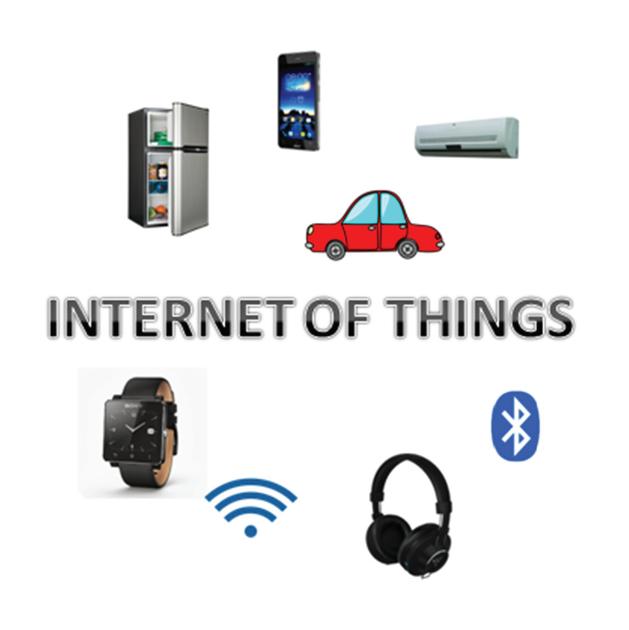
or off. We witness IoT through various complexities ranging from maybe a child’s stuff toy to much more complex applications such as highly specialized healthcare. A brief insight into the history of IoT tells us that the term “Internet of Things” was coined by Kevin Ashton; however, the concept of connected devices came into existence long back dating to 1830s when the first electronic telegraph was developed. This field has gained a lot of sophistication since then and stands at the levels we see it at today and there yet lies more scope to unveil its advanced applications further.
But firstly let us see how IoT works. Four basic contents for IoT are sensors, connectivity, data processing, and finally a user interface. The first key requirement for any device connected to IoT is to first be able to gather the information that it wants to process and communicate to other devices over the network. This is possible with the help of sensors, since they can detect an event or change in the environment of the device that they are attached to. The sensors may be in the form of cameras, microphones, motion sensors, accelerometers, temperature sensors, etc., allowing any device to know its surroundings without requiring any human interventions. The information or data through these sensors is continuously sent to a cloud or server that the device is connected to from where other
Figure 1.3 Illustration of IoT.
devices which have access to that server may attain the information. The information from the cloud is utilized for performing certain tasks without the need of any human to machine or human to human interaction. This technology allows us to refer to devices as smart devices since they are capable to perform some activities on their own when required to do so. Let us consider a common example, smart watches have seen a surge in the number of people using it. These watches gather and present data such as, lets the user know about the number of steps that he took throughout the day, the distance covered, their pulse rate, their body temperatures, some also notify when they sense a surge in heart rate or suspect a medical condition, in case a call or text message notification is received. All this has been made possible with the use of sensors and the technology of IoT. Another example that we all have heard about is Amazon’s Alexa or Google home, these function on voice commands given by the user with the help of sensors that convert verbal instructions into commands understandable by the device’s software and then converts the device’s output into speech to be delivered back to the user, such appliance is also referred to as a chat bot. These may also be configured with smart lighting system or may regulate ac controls with the help of IoT [7]. One widely applicable benefit of IoT is prognostics and advanced system health management (PHM). Herein, we are able to keep a check on the reliability of a device; reliability implies how the asset would perform under the expected set of conditions. This is done by in situ sensing. In situ sensing implies accommodating sensors in various parts under the same environment as the particular area that this sensor is responsible for providing details about. Four dimensions of prognostics and systems health management are sensing, diagnosis, prognosis, and management. Sensors are embedded across different machine parts, and these sensors provide data regarding time-based degradation of the particular part and notify if any anomaly arises. Diagnosis implies extraction of complete fault related information from the signals received by the sensors and lets us know about the amount of damage and provides warning regarding need for replacement or repair in advance. Prognostics help us figure out the remaining life of the equipment and calculate when it would require replacement so that it can be done as per need and sudden disruption can be avoided. Finally, management implies deciding how to tackle the requirements of the machine and performing the procedures accordingly [8]. However, with the advancement and automation that is brought about by this technology, accompanying it are concerns regarding the security issues that may arise due to this technology. Threats such as unauthorized access, phishing, or hacking surround, since it is a digitally augmented space. It is essential to have solutions to such problems or else
it would not be possible to benefit from this technology. One solution suggested to tackle this is to combine the technology of IoT with the support of blockchain technology. How we benefit from this will be seen in better detail in the following section.
1.5
Combining IoT and Blockchain
As we have already seen, IoT connects and facilitates communication for devices connected to each other via the internet and provides storage space over a cloud, thus enabling devices to establish communication between one another and interact to successfully perform certain tasks without the requirement of any human intervention. But we see the need to ensure that this transfer mechanism as well as storage of any shared signals or information should be made secure and attack proof. This is taken care of by incorporating blockchain along with IoT. The combination of both these technologies helps fulfil the necessary security mechanism requirement to IoT which it otherwise lacked. The information that is received by a cloud can be accommodated in a tamperproof and permanent storage in a blockchain thus ensuring that the functioning of the machines, task communication, and messages to each other cannot be manipulated and reach completion in their intended manner. With incrementing the safety standards that the technology offers we will be able to attract a larger chunk of users to adopt and utilize this, and explore more vivid application throughout various spheres. No matter how huge the advancements any technique offers, without it being secure and trustworthy it cannot be brought in usage as the customer world will not accept it and might lead to theft of information or any such crime.





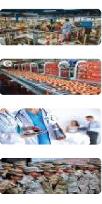

Figure 1.4 IoT and blockchain across industries.
Let us now look into the enhancement that these have brought about through various spheres as mentioned in Figure 1.4.
1.5.1 Agriculture Industry
As we already know, this is the industry that provides employment and income to a very large section of India’s population particularly. Not just in India but almost all countries across the globe practice some form of agriculture or the other to meet the needs of their countrymen and often also from the trading perspective be it within the country’s boundaries or beyond it. In earlier times, this industry was mainly dependent upon natural factors and human labor, whereas now technologies like IoT and blockchain have found implementation in this sector in not just one but many beneficial ways. There are a number of difficulties that this industry has to tackle with. Some of them can be seen as, once the farm produce is obtained only about 50% of the total quantity produced is actually delivered to the end users the rest of it undergoes wastage due to multiple reasons. Another one being the natural degradation of the land resources, with continuous exploitation of the land and soil in order to yield crops for commercial purposes, the maximum capacity and quality of the produce is deteriorating with the passage of time. There are occasions where there has been loss of crop due to either unexpected weather patterns or pest outbreak or even instances of wild animals that happen to enter the field, ruining large portions of the produce. At times, variables such as fluctuation in demand drop in prices or excessive presence of middlemen that may hamper the growth of this industry. Let us know explore what solutions are offered by the technologies of IoT and blockchain and how they are beneficial for this industry [9]. Before the farmers sow the seeds of any crop, they must be aware about the demand that the crop has. It is possible to have an estimate of the same by analysing the trends in the sale of the crop over the previous years. This ensures that demand and supply can be kept proportional hence avoiding wastage and loss.
Crops are best sold fresh therefore incorporation of IoT with the logistics responsible for delivering the product to the market would allow the producer as well as the consumer to be sure of the food being fresh and also to keep a check that no wastage occurs during the transportation of the same. IoT can also serve to improve the quality of the crop. Sensors such as air temperature and humidity sensors, soil pH sensors, sensors to check the water content of the soil, and sensors to evaluate the nutrient content of the soil. All these when connected to each other and onto a server will deliver wholesome information and allow the farmer to cater to the needs
of the crop in a better manner. Since every crop has varying requirements of all these factors the farmer can set the parameter in keeping with those that best suit the crop thus allowing him to achieve the optimum conditions for plant growth. In case there is any deviation that is either lack or excess of any factor the farmer will get to know though his smart mobile connected onto the server where signals from all the sensors are stored, this mechanism will ensure better care to the to the target crop and thus provide better quantity and quality.
A suggested application in this field is to use surveillance cameras along with motion sensors. These motion sensors would be equipped to sense the movement of a body that would resemble that of pests which are dangerous to the crop. If any such motion is detected, the farmer will immediately be alerted through this mobile device and he can also access the cameras output at the time and therefore will be able to keep the produce safe [10]. The problems that faced while trying to implement these technologies in the agricultural industry are the high investment required for installation of required equipment and the technologies ought to bring about sea change in the functioning of this industry and due to lack of any technical knowledge the farmers will face difficulty adapting to this new system. However, once these are successfully integrated these techniques they will serve to regain the vibrancy and attain higher crop yields and better quality
Local storage
Laptop Cloud
Figure 1.5 IoT and Blockchain in agriculture industry.
final products overall application in the field of agriculture can be seen in Figure 1.5.
1.5.2 Manufacturing Industry
Manufacturing industry particularly is embracing these potential technologies. Many are already using supervised systems with connectivity, these production units are able to deliver almost 100% efficiency as they are able to pre-plan and also predict any possible problems before they actually happen and cause delays. All the equipment that is connected via IoT to one another continuously receive and transmit information and maintain coordination helping yield the maximum product from the available raw material in minimum time. The intelligent objects are capable to sense, behave and act in the smart environment to ease the task, reduce human intervention, and increase precision and efficiency. Let us consider an example to see how there technologies are applicable in the manufacturing industry. As in Figure 1.6, consider a car manufacturing company; here, a large number of jobs are conducted ranging from manufacturing various car parts to assembling them together to attain the final product. A key necessity throughout the process is that of accuracy and machines cater to this need which is further enhanced with the incorporation of IoT. Apart from applying IoT to operate the equipment of this industry, its scope can be extended further.
Sensors can be attached to the parts that when put together make the car functional. Followed by connecting all these entities onto a network and establish communication between. It is because of this concept that a user is able to control certain features of the vehicle through an app or with voice commands. Along with this, these sensors will send signals to alert the user about any defect that may arise in the vehicle during the course of
Figure 1.6 IoT and blockchain in manufacturing industry.
